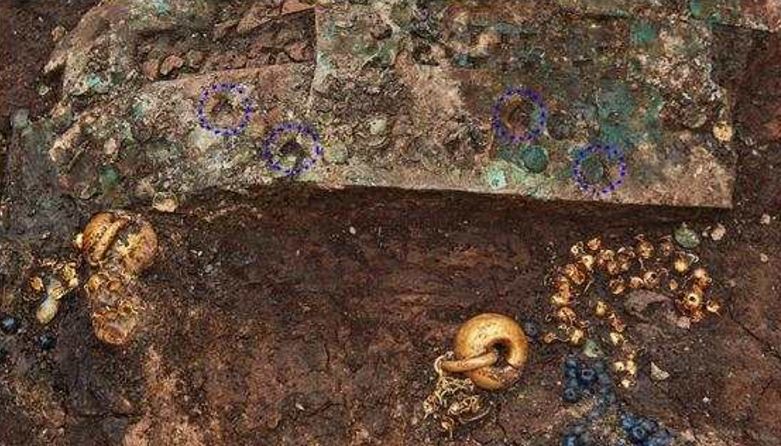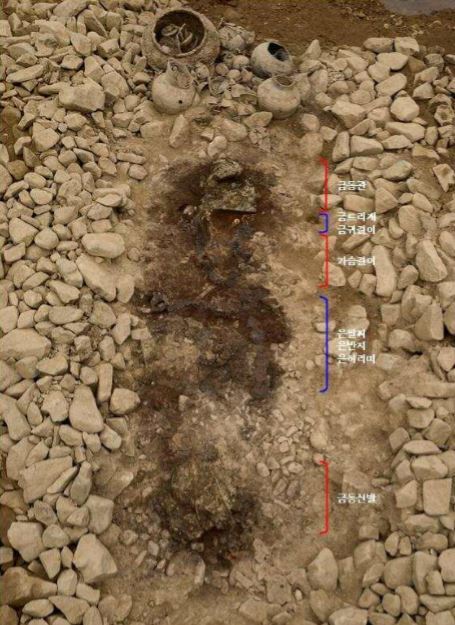 |
Site where gold ring-type earrings were found in tomb No. 120-2 in Gyeongju, North Gyeongsang Province. The earings are thought to have belonged to female nobility. (CHA) |
The Cultural Heritage Administration, in conjunction with the Silla Cultural Heritage Research Institute, has unveiled several newly discovered pieces of jewelry to the public for the first time.
The relics -- thought to be worn in the early sixth century of the Silla Kingdom -- came from an archaeological excavation of sites of tomb No. 120-2 in Hwangnam-dong, Gyeongju, North Gyeongsang Province, the same place site where a pair of gilt-bronze shoes, among other relics, were discovered in May. The newly found accessories include a gilt-bronze crown, gold earrings, silver bracelets, a silver belt, and gilt-bronze shoes.
 |
Site where the body was located in tomb No. 120-2 in Gyeongju, North Gyeongsang Province. Relics including a gilt-bronze crown, gold earrings, silver bracelets, a silver belt and a pair of gilt-bronze shoes were found here. (CHA) |
The Silla Cultural Heritage Research Institute said that this discovery is meaningful as the jewelry was positioned where the dead body is presumed to have been placed. The research institute added that it has been 45 years since a Silla-period gilt-bronze crown was last excavated in Gyeongju.
“The body that was buried in this tomb is presumed to be that of a female royal,” Kim Kwan-il, a researcher from the Silla Cultural Heritage Research Institute said during an online press briefing, which was live-streamed through CHA’S YouTube channel on Thursday. “Big ring-type earings were typically worn by women, while men wore smaller ring-type earrings.”
The researcher added a gilt-bronze crown was found where the body’s head is presumed to have been positioned and the bold ring-type earrings were found below the crown. A pair of gilt-bronze shoes were also found where the dead body’s foot would have been.
The Silla Cultural Heritage Research Institute estimated that the woman was around 170 centimeters tall.
In May 2018, the CHA decided to start researching tomb No. 120. This research and excavation led to the discovery of two additional tombs in 2019, called No. 120-1 and No. 120-2.
The CHA said that it will look further into tomb No. 120 after completing the excavation of tombs No. 120-1 and 120-2. Since tomb No. 120 has the largest mound among the three , the agency expects to find additional relics.
By Song Seung-hyun (
ssh@heraldcorp.com)








![[Today’s K-pop] Blackpink’s Jennie, Lisa invited to Coachella as solo acts](http://res.heraldm.com/phpwas/restmb_idxmake.php?idx=644&simg=/content/image/2024/11/21/20241121050099_0.jpg)
